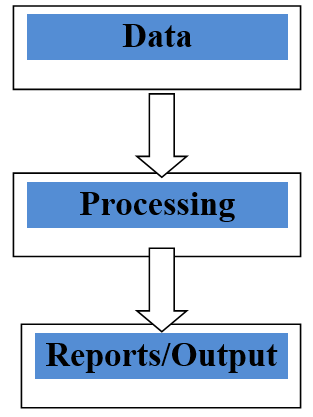Home »
Management Information System
Transaction Processing System (TPS)
MIS | Transaction Processing System: In this tutorial, we will learn about the transaction processing system (TPS) and transaction processing activities.
By IncludeHelp Last updated : June 01, 2023
What is Transaction Processing System (TPS)?
A transaction is a simple process that takes place during business operations. The transaction processing system (TPS) manages the business transactions of the client and therefore helps a company's operations. A TPS registers, as well as all of its consequences, a non-inquiry transaction itself in the database and generates transaction-related documents.
TPS manages and records transactions. It is the automation of the simple, repetitive processing used to support business operations.
Many real-time advantages for every company are offered by transaction processing systems. TPS uses data and creates reports as shown in the diagram below. To find out the key insights for decision-making, it offers graphical or condensed textual data.

TPS was previously referred to as the Management Information System. Data processing was conducted manually or with simple machines before computers. TPS's domain is at the lowest level of an organization's management hierarchy.
A transaction processing system is a form of computer processing that takes place in the presence of a computer user and allows a user request or transaction to be answered immediately.
Examples of processing systems for transactions
Some examples of processing systems for transactions include:
- ATM transactions
- Credit Card system
- Electronic Commerce
- Online Payments
- Online Trading Stocks
- Self-checking stations
TPS is needed to conduct business in nearly any organization today. TPSs bring data into the databases of the organization; these systems are also a basis on which management-oriented information systems are based.
Transaction Processing Activities
The processing of individual transactions depends, of course, to some extent on their nature. The transaction processing general elements include,
- Capturing and validating data
- Transaction-steps of processing
- Maintenance of the database
1. Capturing and validating data
Data capturing denotes to the storage of data through source data automation. Transaction processing systems are increasingly relying on the interchange of electronic data. These systems provide for computer-to-computer communication without repeated data entry by replacing paper documents with formatted transaction data sent over telecommunications networks.
Validation includes checking for missing data items, valid codes and valid values. More extensive validation may involve transaction authorization based on the record of the customer and the inventory available.
2. Transaction-steps of processing
Processing of data inputted by users into automated machinery system, it shows logical and mathematical operations and stores processed results into the system.
2. Maintenance of the database
System files or databases need to be updated after transactions other than inquiries. Thus, the data collected by TPSs serves as a source of detail for management-oriented information system components.
Advertisement
Advertisement